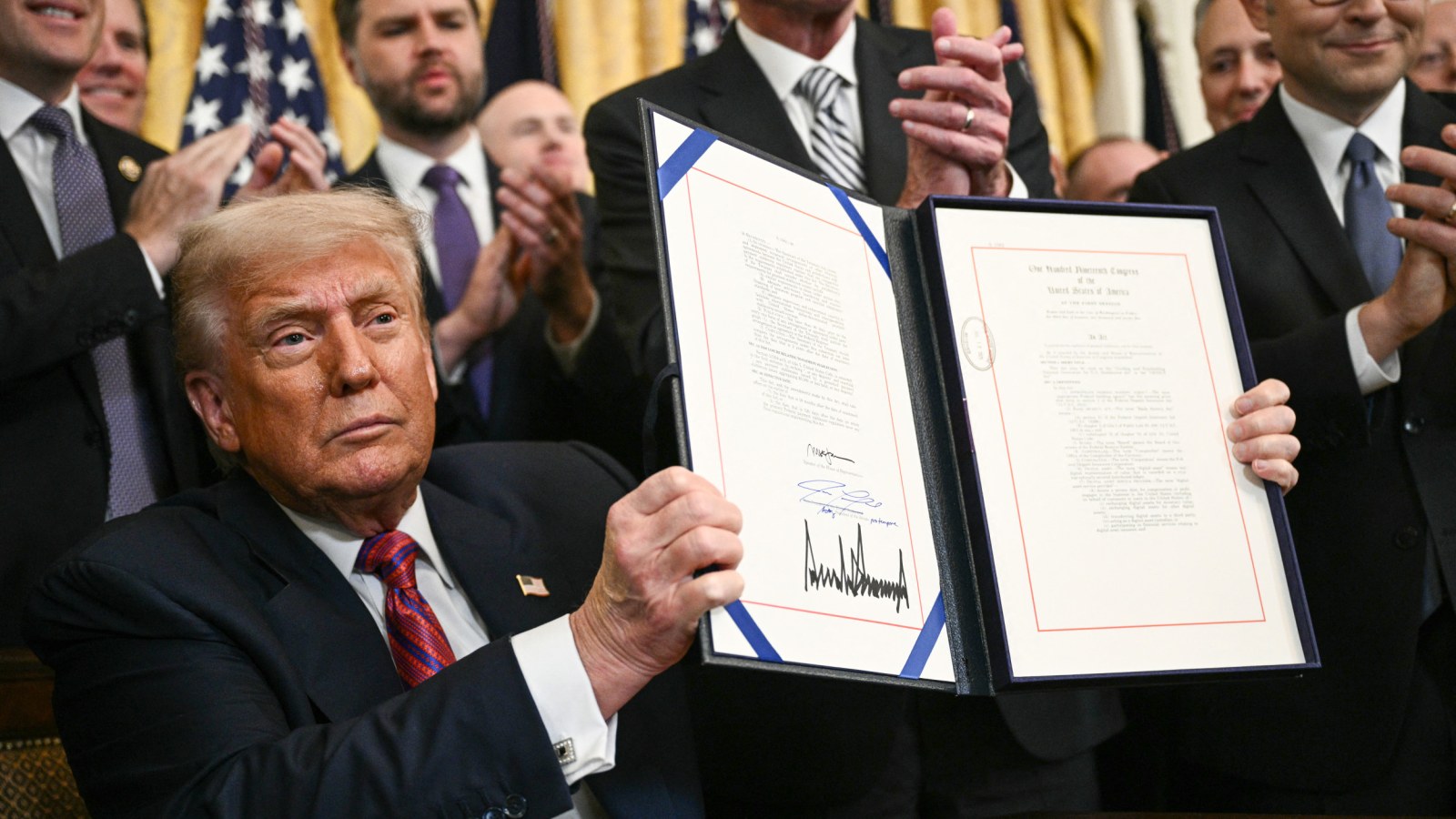By Anna Strebl
Copyright newsweek

Over the past few months, stablecoins have moved from industry pilot to front-page news. Visa expanded its settlement platform to support stablecoins, Stripe rolled out stablecoin payments, and PayPal launched its own PYUSD stablecoin token.Stablecoins are digital tokens designed to hold a steady value, usually one U.S. dollar. They have moved from a crypto niche to everyday technology, with payment companies piloting them for faster, cheaper transfers and policymakers now shaping rules around how they operate.Unlike Bitcoin, whose price can swing by double-digit percentages in a single day, a well-run stablecoin aims to stay at $1. That makes it practical for paying an invoice, buying goods online, or moving money across borders after banking hours. The idea sounds simple. Getting there took a decade of trial, error and course corrections.I have watched that evolution first-hand as CEO of Confirmo, a payments platform that began with Bitcoin and then shifted toward stablecoins as the market evolved. The safety of today’s stablecoins, and the rigorous consumer protections surrounding them, stems from pivotal moments in crypto’s history: high-profile failures, regulatory scrutiny and mainstream skepticism that forced the industry to adapt.From ‘Internet Cash’ to a Usable Dollar OnlineWhen Bitcoin launched in 2009, many imagined it as internet cash: fast, borderless money without card networks or banks. The reality in retail was different. Volatility made pricing unpredictable, fees rose when networks were busy, and settlement could take minutes or hours. For merchants running on thin margins, that was not a payment system they could trust every day.Stablecoins addressed those frictions. By targeting a one-to-one relationship with the dollar or euro, they removed day-to-day price swings while keeping the benefits of modern blockchain networks: near-instant settlement, global reach and availability on nights and weekends.Through conversations with merchants, Confirmo and other stablecoin payment platforms soon learned to move the blockchain to the background. Merchants weren’t interested in the novelty of crypto; they just wanted seamless payments. Platforms responded by hiding blockchain functionality behind the scenes, aiming to make their services feel as simple to use as Stripe—a critical design choice that helped crypto payments appeal to a wider audience.Platforms soon added additional practical features like local-currency pricing, refunds, role-based approvals and accounting-ready exports. Instead of asking merchants to adapt to blockchain’s quirks, they adapted the technology to fit merchants’ needs.Hard Lessons, Stronger SafeguardsIn 2022, the failure of a high-profile “algorithmic” stablecoin (designed to hold its value without holding equivalent cash-like reserves) erased tens of billions of dollars. Later that year, the high-profile collapse of leading crypto trading platform FTX laid bare the transparency gaps and blatant fraud prevalent across crypto.Leading stablecoin issuers quickly responded, providing voluntary attestations and reserve audits, and installing self-imposed restrictions on how treasury assets can be managed.Regulators stepped in, as well. In Europe, the Markets in Crypto-Assets Regulation (MiCA) Act created a framework for stablecoin reserve quality, disclosures, and supervision. In the United States, the GENIUS Act eventually installed similar protections. Reputable issuers now publish regular, independent attestations and keep reserves in cash and short-term government instruments. For instance, Circle’s USDC (a popular stablecoin), now holds about 93 percent of its reserves in Treasuries and overnight agreements, with the rest in cash, and publishes monthly attestations reviewed by Deloitte.These regulations were seen as a major victory for stablecoins, granting them regulatory clarity and unlocking new use cases and business opportunities. Industry leaders lobbied for regulation and cheered when the acts went into effect. But this, too, reflects a dramatic industry shift, learned slowly over time.In its early years, the crypto industry was hostile toward regulators. Leading exchanges like Kraken chose to leave New York rather than apply for the state’s licenses, industry leaders publicly lambasted the SEC and CFTC, and influential voices argued government rules were unnecessary or unworkable for open networks, reinforcing an early ethos of “leave crypto alone.”The tone is different today. Large issuers and exchanges have now called for clear, national frameworks and treat compliance as a product feature. Stablecoin issuers Circle’s CEO, Jeremy Allaire, has urged Congress to adopt federal stablecoin rules and has testified in favor of robust oversight.This maturation has helped stablecoins break out of a libertarian niche, and enabled stablecoin platforms to interface with major financial institutions, enterprise clients and mainstream brands. Today, nearly every major financial institution is exploring stablecoin technology.Their rise has been slow, uneven and at times painful. But by surviving crises, embracing compliance and putting user experience first, stablecoins have transformed from a fringe experiment into one of the most credible building blocks of global finance.Anna Štrébl is the CEO of stablecoin checkout platform Confirmo.



